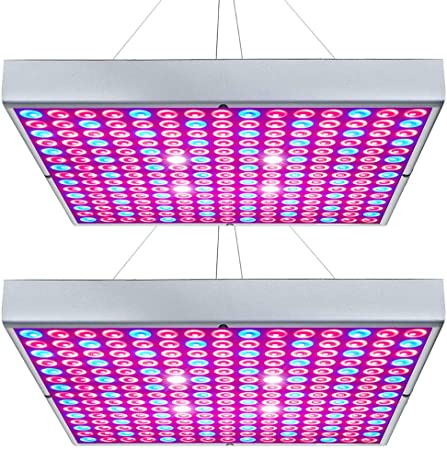
After setting up and properly insulating your greenhouse, you’ll need to focus on lighting. Many plants, including a variety of fruit and vegetable favorites, require grow lights to thrive. Five types of grow lights are briefly summarized below.
Incandescent Lighting
This type of lighting is the least expensive on the market, but its low initial price is offset by poor energy efficiency and a tendency to give off an overabundance of heat, which can disrupt the climate controlled environment of a greenhouse or indoor garden. Although the low price tag makes it seem appealing to beginners or bargain hunters, I would recommend that passionate growers stay away from incandescent lighting.
Fluorescent Lighting
A clear step up from incandescent, fluorescent lighting is both more energy efficient and produces less heat than incandescent lighting. Of course, this comes with a higher upfront price tag, but the energy savings over time and reliability of fluorescent lighting make it a strong contender for small greenhouse use. Fluorescent lighting ranges from warm incandescents to bright whites that mimic daylight, which gives the grower control over the light intensity received by their plants. Overall, fluorescent lights are a solid, mid-tier option. They have a reasonable price tag, offer some degree of lumen control, and have a respectable lifespan. Because of this, fluorescents have developed a niche with small and hobby growers.
LED Lighting
Professional growers and avid hobbyists have come to embrace LED grow lights. Most LEDs are designed to sustain 50,000 hours of use, which far outclasses fluorescent lighting. Unlike fluorescent lights, LEDs do not use mercury, which removes a potential safety hazard from your greenhouse. LED expands on the lumen ranges introduced with fluorescent grow lights by adding color spectrum lighting. The science gets a bit technical here, but the bottom line is that many LEDs have the ability to toggle their diodes to produce more red light and blue-violet light, which plants need, and less yellow and green light, which isn’t as necessary to plants. Always check to make sure a potential LED light provides the full color spectrum of light before purchasing. Some high end LEDs have the ability to mimic UV light, which is necessary in growing plants common to desert or arid regions. Ultimately, the only downside to buying LED grow lights is the high upfront cost. For small, first time gardeners, the investment may not be worth it. Of course, this high upfront cost is offset by a long lifespan—5 times that of fluorescent lights.
CMH (Ceramic Metal Halide) Lighting
CMH expands on the color revolution started with LED lighting. Plants enjoy blue-violet when budding, and they drink up red light when flowering. CMH can produce faithful infrared and UV light, unlike LEDs. Infrared and UV light exposure mimics a natural environment and can discourage pest and mold infections. CMH offers interchangeable bulbs, which allows you to maintain the full intensity of lighting by changing out bulbs rather than disabling diodes (of course, this means more work for the gardener). CMH also beats out LEDs in light penetration. In terms of up-front cost, CMH is often cheaper than LEDs. However, it requires more day-to-day maintenance than LEDs, and does not have the longevity of LED lighting.
HID (High-Intensity Discharge) Lighting
Think of HIDs as LEDs on steroids. They’re exceptionally powerful, and they command an exceptionally premium price tag. As has been the trend throughout this overview, a higher upfront cost equals a higher lifetime use. However, HIDs generate more excess heat than LEDs, which can require additional climate control to offset. HIDs, like the previously mentioned CMH, produce penetrative light, which results in better growth than LEDs. Ultimately though, HIDs should only be considered for serious growing operations.
Joshua Nichols is the MyGardenAndGreenhouse.com associate editor.
Related Articles & Free Email Newsletter
5 Things to Consider Before Purchasing LED Grow Lights
Grow Light Buyers Guide for the Grow Room




Comment here